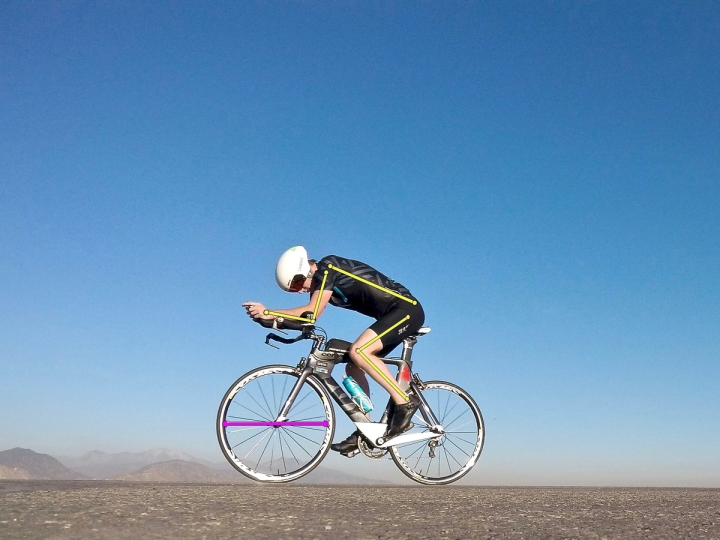Triathlons such as Ironman and Norway’s Norseman competition epitomize human endurance, with competitors undertaking nearly 150 miles of running, swimming, and biking in grueling conditions.
But behind the training and resilience may be basic rules of ecology that help determine the victor long before contestants leave the starting line, according to Dartmouth research.
Ryan Calsbeek, a professor of biological sciences at Dartmouth, analyzed nearly 200 Ironman contestants over two decades and found that performance—specifically in the marathon portion of the event—may be linked to how an athlete’s physique is adapted to shedding or retaining heat in certain climates.
Published in the journal PLOS ONE, the study found that taller, leaner runners with long limbs tended to excel in Ironman events held in warm climates, while marathoners with stockier builds and shorter limbs fared better in colder climates. This physiological advantage was detected in men, but not in women.
The study is among only a few that connects human physiology to what are known as Bergmann’s and Allen’s rules, which predict how animal species are distributed across various climates, Calsbeek says.
Named for the 19th-century biologists Carl Bergmann and Joel Asaph Allen, the rules dictate that overall body size of animals—as well as the length and thickness of their limbs—correspond with climate. Cold-adapted species tend to be burlier with thicker, shorter limbs to limit heat loss, while their sleeker counterparts in hotter climes are built to keep cool efficiently.
These rules, however, are less understood in humans. A small number of studies from the mid-20th century suggested a link between physiology and climate, with people from cold or high-altitude regions having proportionately stockier builds.
The study in PLOS ONE, Calsbeek says, is among the first to suggest that human physiology may be adapted to climate to optimize physical performance. “This study shows that variation in running performance among male triathletes is consistent with both Bergmann’s and Allen’s rules,” he says.
“That suggests that global patterns of temperature and climate that determine differences in body shape among species around the planet may have shaped human body types to look and perform the way they do. These patterns may also influence performance in Ironman triathlons and other endurance sports,” Calsbeek says.

Calsbeek examined 171 triathletes who competed in at least two Ironman events—one in a hot location and one in a cold climate—between 2001 and 2021. The wealth of publicly available photos for Ironman events allowed Calsbeek to use digitizing software to measure competitors’ morphology based on pictures from the bike portion of the competition. Although bikes come in many sizes, wheel diameters are identical, which gave Calsbeek a size standard for measuring athletes from photos.
A past Ironman contestant himself, Calsbeek chose to study the triathlon because the different events provide a natural control to studying how physiology determines performance. Swimming is an activity humans are not evolutionarily developed to perform and cycling is aided by technology. A person’s performance in those events can be weighed against their aptitude at running to determine the influence of body type.
“A triathlon is a great human system to study because there is one event, running in particular, that we know to be important in the evolution of humans and two events—swimming and cycling—that are not, so there’s a great natural control,” Calsbeek says. “Male triathletes exhibited the most significant difference in performance based on physiology and the effect was most prominent in the run.”
The lack of a significant effect of physiology on the performance of women triathletes could come down to evolution, according to Calsbeek.
“This effect is likely seen only in males because natural selection acted on running performance in males to be persistence hunters,” he says.
Calsbeek was inspired to conduct the study after observing that the three-time winner of the Norseman triathlon, Allan Hovda, was stockier and shorter than one may imagine a victorious triathlete being. “I wondered if there was something about body shape that allowed him to do better in the cold and thought about the role temperature might play for this one guy who doesn’t look like your standard endurance athlete,” he says.
The findings suggest that aspiring endurance athletes may want to consider venues in climates for which their physiology is naturally attuned, Calsbeek says.
“This study included a broad sample of athletes to account for motivation and training, but the link between performance and physiology was statistically significant in spite of those factors,” Calsbeek says. “People attempting a personal best time can think about race locations and average temperatures to pick a venue based on how their body type is adapted to perform.”
